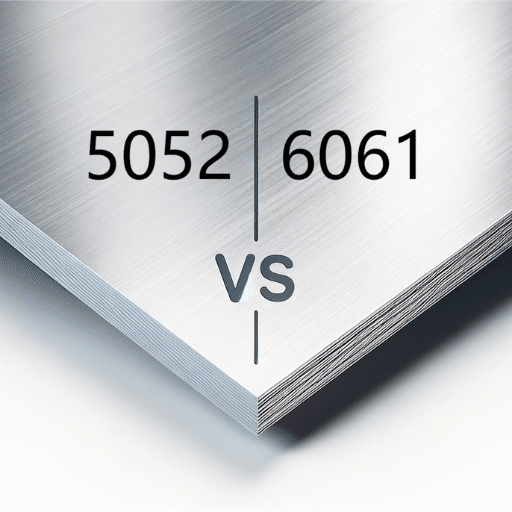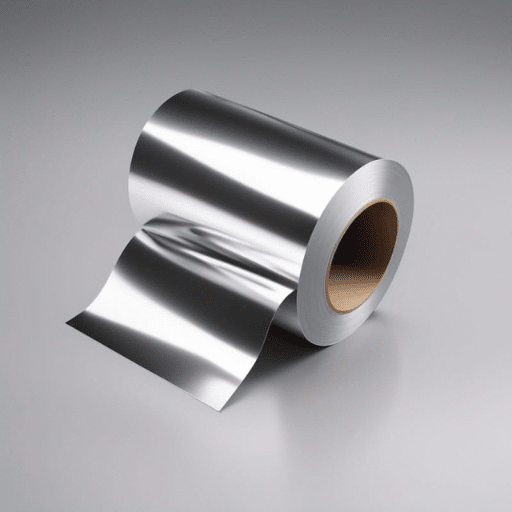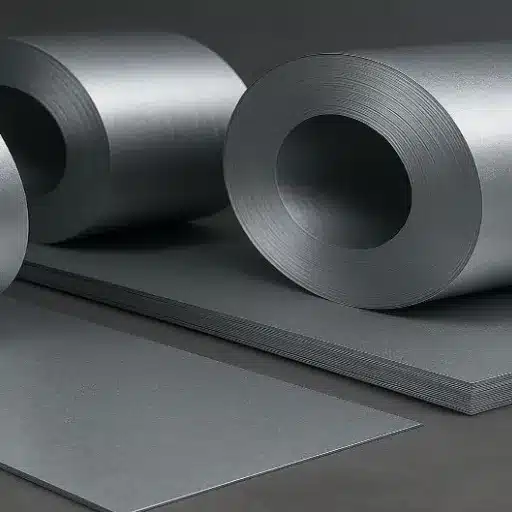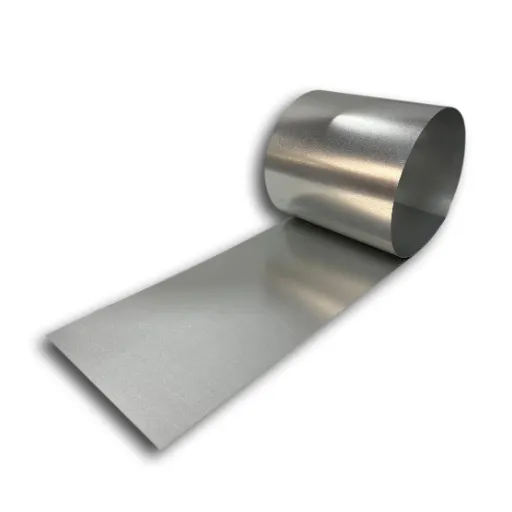From construction to automotive manufacturing, and electronics to aerospace, metals are central to many industries. Knowing the difference between ferrous and non-ferrous metals is important when considering which material best suits a given application. The differences within these classes of metals greatly vary in composition, metals and their alloys, properties, strength, and scope of application. In this article, I illustrate the main distinctions between ferrous and non-ferrous metals as well as the industries that use them so that professionals and non-specialists alike appreciate their relevance. Throughout this guide, readers will learn about the defining features and purposes of the metals that are integral to the global economy and industry.
What is the Difference Between Ferrous and Non-Ferrous Metals?

The composition of ferrous and non-ferrous metals marks the primary distinction, with ferrous metals possessing iron, which makes them magnetic and more susceptible to rust without any aid, while non-ferrous metals do not have iron, making them capable of resisting corrosion and rust far better. Cast iron and steel are a couple of examples of ferrous metals that are strong and used extensively in construction and infrastructure development. Apart from steel and cast iron, non-ferrous metals that are light, such as aluminum, copper, and brass, along with their superb malleability and electrical conductivity, allow their use in the aerospace, electronic, and automotive industries.
What are Ferrous Metals?
Ferrous metals are those that mainly contain iron combined with other elements to improve their properties. These metals have great tensile strength and durability, which is why they are best suited for construction, automotive, and heavy machinery industries. One thing which must be noted is the fact that ferrous metals tend to rust, due to aging and their iron content,t unless treated or alloyed with better materials such as chromium, like in stainless steel. Their economic effectiveness has surely bound allies in heavy industry across the world.
Characteristics of Non-Ferrous Metals
The key properties of nonferrous metals are their strong resistance to corrosion, chemical deterioration, lightweight nature, and superb electrical and heat conductivity. Nonferrous metals, unlike ferrous metals, have no appreciable quantities of iron, making them suitable for uses where rust and weight are concerns. Their use lies in the aerospace, electronics, and transportation industries because of their durability, malleability, and distinct electrical and thermal behavior. Common examples are aluminum, copper, and titanium.
How to Identify Ferrous vs Non-Ferrous Metals?
Discriminating between ferrous and non-ferrous metals is less challenging than one may think. Listed below are the parameters that I review in deciding whether a given metal is ferrous or non-ferrous:
- Magnetism
Magnetic metals have a magnetic attribute because of the iron they contain. Performing a magnet test will tell you if a metal is magnetic or not. If the metal is attracted to the magnet with a strong pull, it is mostly ferrous. Unlike other metals, aluminum, copper, and brass are magnetic non-ferrous metals.ferrous vs non ferrous
- Rust or Corrosion Resistance
Checking for rust is always a good idea. The presence of iron makes ferrous metals specifically rust when they come in contact with moisture without any form of treatment like it is in stainless steel. Rust or corrosion is naturally absent in non ferrous metals like aluminum and copper which allows them to be used in marine and outdoor appliances.
- Weight
The majority of Non-ferrous metals are lighter in mass compared to ferrous metals. For instance, steel is heavier than aluminum. In the automotive and aeronautic industries, weight is important. Because of this, aluminum is perfect for these industries.
- Color
The color of the metal can provide clues. A perfect example is Copper which has a unique reddish brown color and brass the gold alloy of copper and zinc. Ferrous metals is primarily magento in color hence it is gray silver.
- Spark Test
In a workshop context, a spark test can be quite revealing. As ferrous metals are ground, they generate bright sparks. Non-ferrous metals, however, produce little to no sparks.
- Conductivity
Generally, non-ferrous metals have higher conductivity when compared to ferrous metals. Copper is known to be one of the best conductors of both heat and electricity which makes it a common metal for use in electric wires.
Using these simple methods, I can distinguish between ferrous and non-ferrous metals both accurately and quickly. The context varies for each parameter, and their combinations offer confidence for correct identification.
What are the Properties of Ferrous Metals?
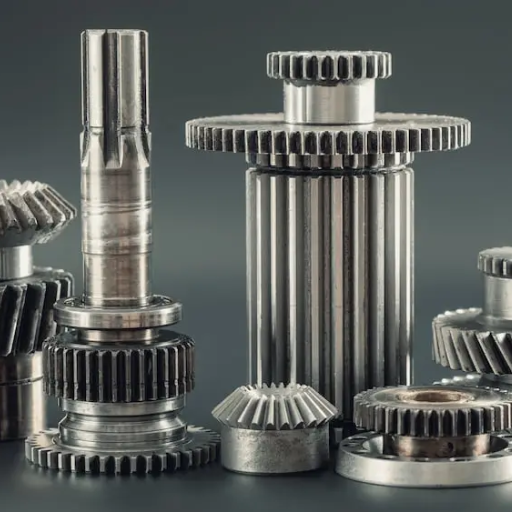
Metals with considerable iron tend to display remarkable strength and durability. My personal experience describes some of their key attributes as strong tensile strength, machinability, and magnetic properties due to their iron content. Even though they are durable and strong, ferrous metals are likely to rust and corrode if left untreated. As an instance, I often use cast iron and steel, two ferrous metals, for my heavy industrial work. Because of these features, ferrous metals prove to be incredibly useful in tools, automotive equipment, and structural frameworks of buildings.
Why do Ferrous Metals Contain Iron?
The metals classed under ferrous materials have iron as their principal element and hence, they contain iron. “Ferrous” is a word which comes from the Latin term “ferrum” which means “iron.” These metals gain their vital qualities such as strength, magnetic properties, and durability from iron, which is the reason why these metals are important for use in a variety of fields.
What are the Magnetic Properties of Ferrous Metals?
ferrous metals are useful because of their magnetic properties. In connection with their iron content, these metals have strong ferromagnetism, which makes them easy to magnetize and demagnetize. This characteristic is particularly useful in the making of electrical devices like motors, generators, and transformers. Furthermore, it is important to point out that the degree of magnetism differs depending on the alloy composition, its heat treatment, and the ways it has been processed. This flexibility enables ferrous metals to meet particular requirements, thus guaranteeing maximum efficiency in both technological and industrial uses.
Common Examples of Ferrous Metals
Examples of ferrous metals are steel, cast iron, and wrought iron. Because of its phenomenal strength and ability to be used in many different ways, steel is a key component in construction and manufacturing. Cast iron metals are durable, can withstand high temperatures, and are perfect for crafting engine parts and cookware. Wrought iron is easier to shape into various forms, which is why it is used to make gates, fences, and even furniture pieces. All of these metals serve as proof that ferrous materials are used in many industries.
What are the Properties of Non-Ferrous Metals?
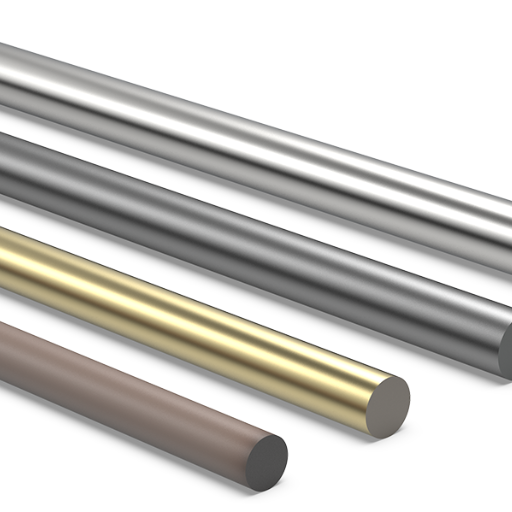
I have come to learn that non-ferrous metals are non-magnetic, lightweight, and possess great corrosion resistance. The combination of many of these properties supports their utilization in harsh marine environments where durability is crucial. The explanation of marks being nonmagnetic makes them imperative in the production of electronic components. From copper and aluminum to titanium, non-ferrous metals are highly used in the aerospace and automotive industries due to possessing great strength-to-weight ratio. Their notable thermal and electrical conductivity eases and enhances the magnitudes of application in the generation and distribution of power. The combination of these great properties allows non-ferrous metals to play a major role in engineering and manufacturing.
What Makes Non-Ferrous Metals Corrosion-Resistant?
Besides having resistance to rust due to their lower iron content, non-ferrous metals contain aluminum and copper, which oxidize when exposed to air, further protecting them from environmental damage. Coping with extreme environments such as industrial, outdoor, and marine sites becomes effortless because of such metals.
Common Examples of Non-Ferrous Metals
Non-ferrous metals are very crucial to many industries because of their special characteristics, They use non-ferrous metals in a variety of applications. These consist of aluminum, copper, brass, and zinc, which are some of the most commonly utilized metals. For example, aluminum has a low weight, is very strong, and does not corrode, thus making it critical for use in construction and aerospace. Electrical wires and heating cables make use of copper, which is valued for its electrical and heat conductivity. Brass, an alloy of copper and zinc, is famous for its strong and ornamental nature, which makes it widely used in plumbing and in the manufacture of musical instruments. Zinc is, however, extensively employed in the galvanization of steel to protect it from rust. In addition to being suitable for a broad range of industries and commerce, these metals also improve performance.
How do Non-Ferrous Metals Compare in Durability?
The best nonferrous metals, such as aluminum and titanium, are especially useful in constructions that are exposed to moisture, chemicals, or extreme temperatures, as they don’t rust or corrode due to the strength and light weight they offer. Copper and its alloys possess strong structural integrity, especially withstanding deformation over time. Unlike ferrous metals, nonferrous options are dependable and reliable even under extreme conditions. This makes such metals useful in aerospace and construction fields.
What are the Common Uses of Ferrous and Non-Ferrous Metals?
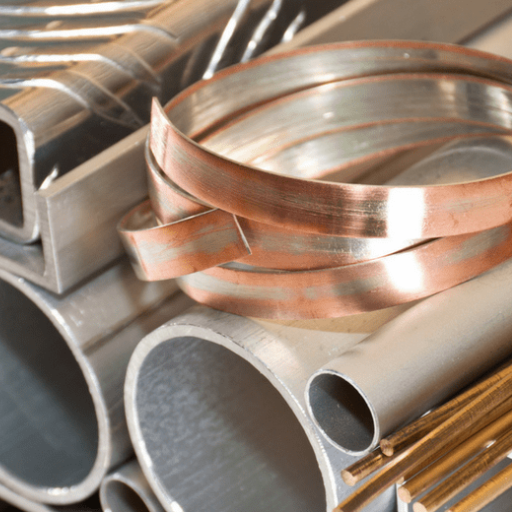
Ferrous metals are commonly used in construction ventures where sturdiness and strength are famously needed. Steel is a ferrous metal that is common in steel constructions as it is able to enable wider boundaries to be carried without collapsing due to its high tensile strength. Cast iron is also mystically useful for building automobiles and transportation pipe systems as well as heavy machinery due to its jaw-dropping wear resistance and load-bearing abilities.
Shapiro dhhskfb non ferrous metals dsdiaot appear at overshadowed beings. Aluminum makes up 1.2 percent of these metals and me especially useful in the production of airline parts, cars, and more specific electronics. Plumbing and electric wiring use copper without a second guess due to its unrivaled conductivity. Medical implants and frames for cars and airplanes everywhere make use of titanium as it is out of this world in strength-to-weight ratio and corrosion resistance. Each of these ferrous and nonferrous metals has its own signature trait, which enables their use in a wide range of modern innovations.
Where are Ferrous Metals Used?
Because of their sturdiness and long-lasting nature, ferrous metals are widely employed in the construction, automotive, and manufacturing industries. They greatly aid in making the frameworks of buildings, bridges, and even reinforcement bars (rebar). Moreover, they play a critical role in making parts of vehicles, industrial machinery, and tools, thus, making them essential for heavy-duty functions.
Applications of Non-Ferrous Metals
Non-ferrous metals are versatile materials across various industries. For instance, aerospace and automotive industries utilize aluminum and titanium due to their lightweight but sturdy properties. Copper reigns supreme in electrical wiring and components for its unrivaled conductivity, while stainless and corrosion-resistant materials like nickel excel in chemical processing and the marine industries. These metals are irreplaceable in modern engineering, and non-ferrous metals.
Comparison of Uses of Ferrous vs Non-Ferrous Metals
It’s important to ponder the distinctive characteristics of ferrous and non-ferrous metals before analyzing their practical usage in everyday life. Based on my experience in the industry, I have given the most important distinguishing factors below for easier understanding of their applications and uses.
- Strength and Durability
Non-ferrous metals, such as aluminum and copper, are lighter in comparison to ferrous metals like steel and cast iron; however, ferrous metals are recognized for their strength and durability. These properties make them perfect for construction, infrastructure, and tools. For instance, structural steel is a staple material for the frameworks of buildings because it can support a lot of weight and withstand stress. Moreover, some ferrous metals are prone to rusts, which require protective measures such as coating or galvanization.
- Weight
Non-ferrous, light weight metals are favorable to use for applications where weight is of a concern. Such as in the case of the aerospace and automotive industries, where aluminum is extensively employed to improve fuel efficiency, all while maintaining the design’s structural integrity.
- Corrosion Resistance
Aluminum, copper, and nickel are non-ferrous metals known to have high resistance against rust and corrosion, making them irreplaceable in corrosive environments. Copper is widely used in plumbing and electrical systems, while nickel is ideal in chemical processing equipment and maritime applications.
- Electrical and Thermal Conductivity
In terms of conductivity, non-ferrous metals are superior to ferrous ones. Take copper, for instance; it is the primary material used in the manufacturing of electrical wires and components because of its excellent conductivity. Aluminum’s good conductivity and light weight make the metal of choice for power lines.
- Cost Considerations
Compared to non-ferrous metal, ferrous metals tend to be cheaper, making them the ideal candidate in projects that are budgeted. On the other hand, projects that involve design specifics such as lightweight structures, non-ferrous metals may seem to be more expensive but will reduce costs in maintenance, which makes it a worthy long-term investment.
Conclusion suggests that ferrous metals serve better as options for structural applications requiring high strength, whilst non-ferrous metals are best suited in cases where the material should be light weight, highly conductive, and resistant to corrosion. Understanding these specific particulars allows us to select the best suitable materials for every possible project or application.
How Important is Metal Recycling for Ferrous and Non-Ferrous Metals?
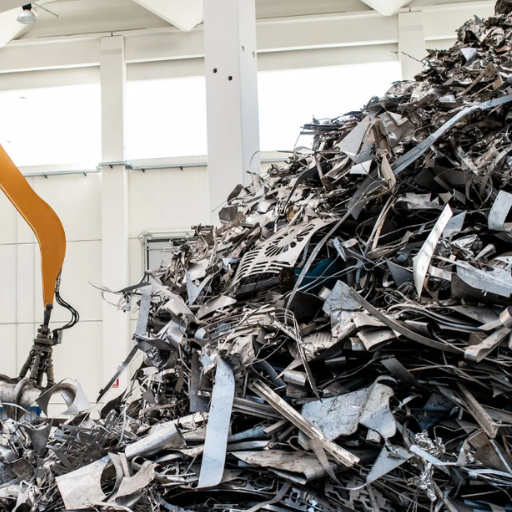
Any person who owns, runs an enterprise, or emits waste needs to be updated on metal recycling, especially for ferrous and non–ferrous metals. This is because of its immense economic impact or gain, environmental issues, and resource conservation, unlike any other way. The value of scrap metal goes up tremendously as it lowers the need for raw material mining, which results in disruption of ecosystems and energy usage, such as in the case of non-ferrous metals, such as aluminum, which uses significantly less energy to recycle than to produce new. Furthermore, it lowers greenhouse gases and waste dumped into landfills, which strengthens the sustainability of industrial processes. For issuing ferrous metals, the value of recycling guarantees cheap steel, which is the highest produced metal in the world, while increasing profit margins from production and using up fewer resources. Therefore, recycling improves sustainability and efficiency in all areas of managing resources in the metal business, and all metals should be recycled.
What is the Process of Metal Recycling?
The process of metal recycling is both systematic and critical, starting from the collection of metals as scrap from construction sites, factories, and even households. Materials are sorted into types, which include ferrous, like steel, and nonferrous, like aluminum and copper. After sorting, the next step is cleaning the metals from impurities like paint and plastic coatings. Later on, they are cemented or placed into furnaces where they are shaped into a raw reusable form. Eventually, the metals are able to be molded into new products, therefore reducing the need to use virgin resources. In conclusion, it is a seamless process that reveals the beauty of efficiency and environmental responsibility.
Benefits of Recycling Ferrous and Non-Ferrous Metals
Recycling both ferrous and non-ferrous metals has multiple benefits. It preserves natural resources because there is less need for mining and extraction of base materials. Furthermore, it decreases energy consumption significantly because recycling metals often requires significantly less energy than producing new metals from ore. This process also helps reduce emissions of greenhouse gases, which further reduces pollution. From an economic perspective, it helps to reduce expenditure for businesses and increases employment opportunities in the recycling and fabrication industries. All in all, recycling metals is important in encouraging sustainability and reducing Environmental impact.
Challenges in Metal Recycling
Contamination occurs when non-recyclable materials or other metals are mixed with metals, making the separation process more difficult, inefficient, and expensive. Another stubborn problem is insufficient public knowledge of recycling methods, which more often than not causes important metals to be wasted. Besides, the differences in recycling infrastructures from one region to another worsen the situation, because not all facilities can treat the same variety of materials. Tackling these issues requires continual investment in new technologies, public education, and a unified framework for recycling infrastructure development.
How to Choose Between Ferrous and Non-Ferrous Metals for Projects?
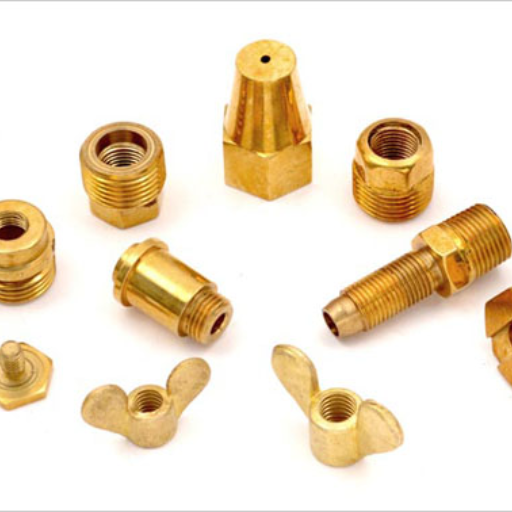
Each decision to use either ferrous or nonferrous metals comes with critical components such as the material’s properties, applications, cost, and environmental conditions. Steel falls under the category of ferrous metals and is best used when there is a budget constraint and significant toughness is required because of its durability and widespread availability. If the application requires significant malleability or a lower weight, non-ferrous metals like brass, aluminum, and copper would be better options. Each project has unique constraints, including moisture, project dimensions, funding, and weight, which must be taken into consideration in order to make the right precise decision.
Factors to Consider When Selecting Types of Metal
I would suggest that your selection of what metal to use is dictated by the requirements set out in the project. Here is my step-by-step framework:
- Durability Needs: If your project entails strength and resistance to wear, ferrous metals, for instance, steel, are my first choice. They are super tough and have great load-bearing strength, which makes them suitable for construction and other heavy-duty work.
- Corrosion Resistance: For an environment where moisture or chemicals are continually present, I prefer non ferrous metals. Metals like aluminum as well as stainless steel are best suited because they do not rust or corrode easily. This is important when it comes to outdoor structures, pipelines, or installations around coastal areas.
- Weight Requirements: For projects that require paying particular attention to weight, such as parts of an aircraft, automobile, or even portable buildings, I tend to go for light metals. Aluminum, for instance, is light yet strong, which makes it versatile.
- Malleability and Workability: Softer metals like brass or copper tend to work well for intricate designs with great detail. They are perfect for decorations and plumbing works because they can easily be shaped without breaking into pieces.
- Cost and Budget: Budget fast is very important. For big scale, steel is more economical for most situations, but when a project’s requirements fit with the advantages brought by non-ferrous metals, that investment is often worth it in the end.
Evaluating the parameters of a metal’s durability, corrosion resistance, weight, malleability, and cost allows for intelligent selection of metals that will work for each individual project and aids in avoiding any obstacles along the way. Remember to choose according to the specifics of the requirement!
Cost Comparison: Ferrous vs Non-Ferrous
As a result of the simple extraction processes and their availability, ferrous metals cost less than non-ferrous metals. Even though non-ferrous metals are costlier, their light weight, corrosion resistance, and superior malleability justify the higher price tag. The selection will depend on the initial expenditure against the long-term performance factors, like environmental exposure or bearing capacity. In non-ferrous metal cases, while the upfront cost is more expensive, the investment pays off in the long run for projects that are expected to endure difficult conditions over a long period. Ferrous vs non-ferrous
Mechanical Properties of Ferrous and Non-Ferrous Metals
the mechanical properties of ferrous metals and nonferrous metals greatly affect their use in any application. Steel and cast iron, as ferrous metals, boast remarkable strength and durability along with the ability to endure great stress, which is critical in construction, automotive, and heavy machinery industries. Nonferrous metals also have their fair share of uses, with aluminum, copper, and titanium offering distinct advantages of lower weight, increased corrosion resistance, and better workability. These characteristics are important for industries where weight saving and life expectancy are important, like aerospace and electronics. Ultimately, making informed decisions based on the mechanical differences of these metals helps us better tailor each project to specific demands.
Reference
- The Difference Between Ferrous and Non-Ferrous Metal – Metal Supermarkets
- Ferrous vs. Non-Ferrous Metals – MetalTek
- Ferrous Metals and Non-Ferrous Metals – ASM Recycling
Frequently Asked Questions (FAQs)
Q: What are ferrous vs non ferrous?
A: Ferrous metals are those that contain iron and carbon, such as carbon steel. Nonferrous metals, on the other hand, do not contain iron. Examples of nonferrous metals include aluminum, copper, and precious metals like gold and silver.
Q: How can I tell if a metal is ferrous?
A: You can often tell if a metal is ferrous by checking if it is magnetic and if it rusts when exposed to moisture. Ferrous metals, such as carbon steel, tend to be magnetic and are vulnerable to rust.
Q: What are the main differences between ferrous and nonferrous metals?
A: The main difference is that ferrous metals contain iron, making them stronger but also more prone to rust. Nonferrous metals do not contain iron, making them more resistant to rust and corrosion, and often more malleable.
Q: What are some common uses of ferrous metals?
A: Ferrous metals are used in construction and manufacturing due to their strength and durability. Common uses of ferrous metals include building infrastructure, automobiles, ships, and various machinery.
Q: Are nonferrous metals more expensive than ferrous metals?
A: Nonferrous metals are generally more expensive than ferrous metals due to their scarcity, resistance to rust, and desirable properties such as malleability and conductivity. Precious metals like gold and silver are examples of valuable nonferrous metals.
Q: Why do ferrous metals rust, and how can this be prevented?
A: Ferrous metals rust when exposed to moisture and oxygen because they contain iron. This can be prevented by applying protective coatings, using rust-resistant alloys, or keeping the metals in dry environments.
Q: What are some applications of nonferrous metals?
A: Nonferrous metals are used in applications where rust resistance, malleability, and conductivity are important. For example, aluminum is used in aircraft and packaging, copper in electrical wiring, and precious metals in jewelry and electronics.
Q: How does high carbon content affect ferrous metals?
A: High carbon content in ferrous metals increases their hardness and strength but makes them less malleable. This makes high-carbon steel ideal for cutting tools and blades but less suitable for applications requiring flexibility.
Q: Can ferrous and nonferrous metals be recycled?
A: Yes, both ferrous and nonferrous metals can be recycled. Recycling helps conserve natural resources and energy. Ferrous metals are often melted down and reused, while nonferrous metals retain their desirable properties after recycling.
Q: Why is it important to learn more about ferrous vs nonferrous metals?
A: Understanding the differences between ferrous and nonferrous metals helps in selecting the right material for specific applications, ensuring performance, cost-efficiency, and longevity of the products.

